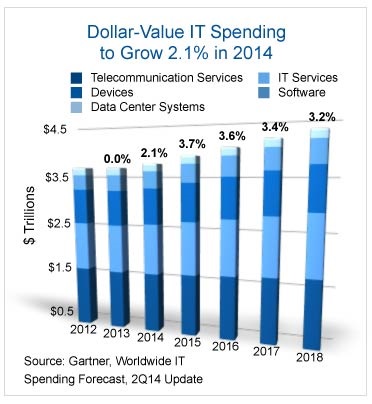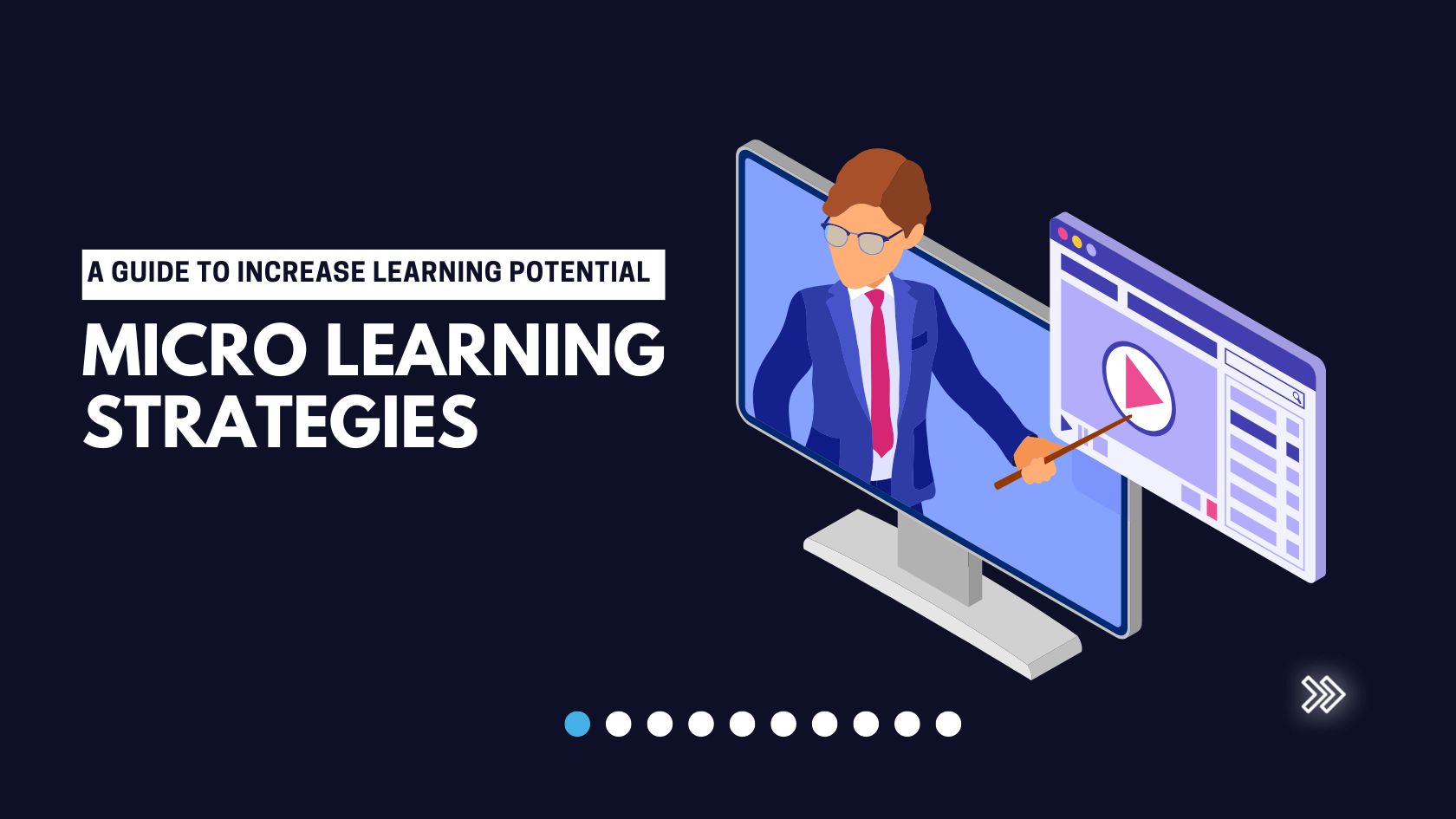Enterprise Software Leads IT Spending Growth
Gartner recently released a Worldwide IT Spending Forecast, highlighting the fact that enterprise software is going to experience by far the strongest growth of any IT sector.
Of a projected $3.8 trillion in worldwide IT spending in 2014 (up 3.1 percent from last year), software’s share of the pie is less than 10 percent at $321 billion. But its anticipated 6.9 percent growth rate in 2014 is well ahead of the other sectors (IT services 4.5 percent, devices 4.3 percent, data center systems 2.6 percent and telecom 1.2 percent).
 Rather than regurgitate the brief Gartner summary of all sectors, Enterprise Apps Today interviewed Gartner analyst Bianca Granetto for a deep dive into the details of the software sector. She explained that Gartner breaks software into enterprise application software and infrastructure software categories, with the latter being a slightly larger market.
Rather than regurgitate the brief Gartner summary of all sectors, Enterprise Apps Today interviewed Gartner analyst Bianca Granetto for a deep dive into the details of the software sector. She explained that Gartner breaks software into enterprise application software and infrastructure software categories, with the latter being a slightly larger market.
Even within the infrastructure segment (which includes storage management, virtualization, security, operating systems and IT operations), some of the strongest sub-groups in terms of overall growth projections are zones directly supporting enterprise applications such as data integration/quality tools, middleware and application development. Much of this activity is being driven by a renewed focus on how to exploit analytics to improve customer marketing efforts and enhance the customer experience. In addition, the journey to the cloud is top of mind in the software infrastructure arena.
“Probably the strongest driver of spending is modernization of the software infrastructure to ready it for the cloud,” said Granetto. “This is also driving spending in related areas such as servers, adding storage for Big Data and investment in in-memory computing to facilitate analytics.”
Leaving Legacy Behind
The business community already has a hefty investment in application software tools. Consequently, enterprises are overloaded with what used to be state-of-the-art systems, but are no longer. Thus legacy system upgrades or replacements in areas such as customer relationship management (CRM), supply chain management (SCM) and analytics are generating a lot of revenue currently and will continue to do so through 2018, according to Gartner.
“Enterprises are realizing that they must extend legacy application functionality into more advanced analytics and into the cloud,” said Granetto.
Over the next five years, Gartner sees CRM showing the greatest amount of growth at an impressive 15.7 percent per year. Next is enterprise content management or ECM (11.9 percent), Web conferencing/collaboration/social software (10.9 percent), SCM (10.3 percent), project and portfolio management (9.3 percent), business intelligence (8.7 percent) and ERP (6.7 percent).
Analytics a Key Driver
These numbers, however, might leave a distorted impression of the importance of analytics. It turns out that direct spending on BI/analytics is only part of the equation. To create the degree of analytics capability that they desire in order to attack some of their more pressing Big Data problems, organizations are investing in related areas.
“Analytics is the most desired function across all applications, as it’s where enterprises feel they have the largest gap,” said Granetto. “It is largely analytics that is driving product roadmaps for CRM, content management and ERP. For example, most of the ECM demand is based around content analytics.”
The BI/analytics field has become a schizophrenic to some degree, Granetto explained. On the one hand, line-of-business managers are spending some of their own budget to have cloud-based analytics at their fingertips, independent of IT. But on the other hand, this decentralization trend is causing some organizations to begin to grab back control by consolidating business intelligence activities.
By establishing more centralized BI and analytics teams, they can realize the benefits of data science expertise rather than spreading it thinly around the various business units. It’s a case of finding the right balance so that business managers have fast access to the insight that can help them increase efficiency and productivity.
Digital Business and the IoT
According to Granetto, a nexus of forces is disrupting the entire IT landscape, particularly on the enterprise application front. She’s talking about the potent combination of cloud, social media, Big Data (including analytics) and mobile which enables what Gartner has termed the “digital business.”
“It’s the combination of these four forces that enables digital business,” said Granetto. “What makes this different from electronic commerce is that on top of the people, business processes and transactions, we have things.”
Things? This ties back to the Internet of Things (IoT). By embedding sensors inside every conceivable device, machine and object, and connecting them to the Internet, an immense pile of data can be viewed and managed by any Internet-connected device: desktop, laptop, smartphone or tablet. Given the right sensors and right software, an anomaly detected in an industrial machine, for example, can lead to automatic ordering of a replacement part, calling a technician, requesting a P.O., scheduling maintenance and notifying management on the health of the device.
“Big Data technologies will be able to leverage information for such areas as sentiment analysis, behavioral targeting and processing higher volumes of data in different and more convenient ways than in the past,” said Granetto. “The digital business is becoming a business imperative of CEOs as they see it as a way to creatively disrupt business models and generate higher income.”
Bottom line: This adds up to far more spending on enterprise applications. According to Gartner, enterprise application software investment will almost double from its total of $300 billion at the end of 2013 to $575 billion by the end of 2018.
Drew Robb is a freelance writer specializing in technology and engineering. Currently living in Florida, he is originally from Scotland, where he received a degree in geology and geography from the University of Strathclyde. He is the author of Server Disk Management in a Windows Environment (CRC Press).

Drew Robb is a writer who has been writing about IT, engineering, and other topics. Originating from Scotland, he currently resides in Florida. Highly skilled in rapid prototyping innovative and reliable systems. He has been an editor and professional writer full-time for more than 20 years. He works as a freelancer at Enterprise Apps Today, CIO Insight and other IT publications. He is also an editor-in chief of an international engineering journal. He enjoys solving data problems and learning abstractions that will allow for better infrastructure.


